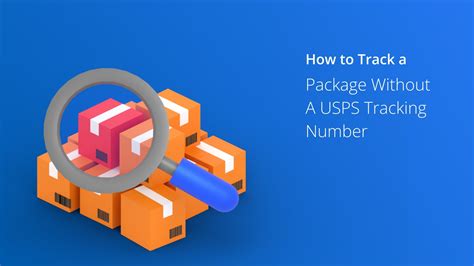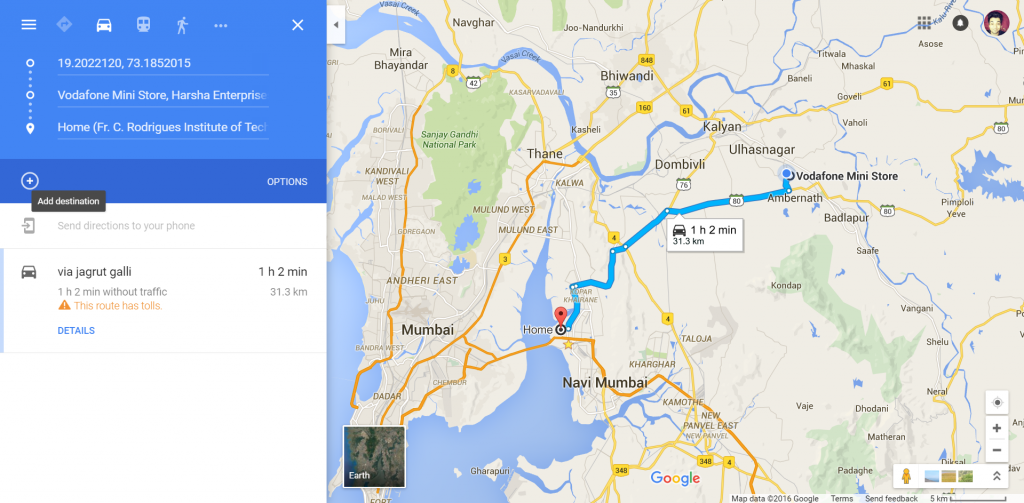Packing Tracking

In today's fast-paced world, where online shopping and global trade thrive, efficient and reliable packing and tracking systems have become an integral part of logistics and supply chain management. From the moment an item is packed for shipment to the moment it reaches its destination, a seamless tracking process ensures transparency, accountability, and customer satisfaction. This article delves into the world of packing and tracking, exploring the latest advancements, best practices, and the impact they have on various industries.
The Evolution of Packing and Tracking
The history of packing and tracking can be traced back to ancient civilizations, where merchants and traders employed various methods to secure their goods and ensure their safe delivery. Over the centuries, packing techniques evolved from simple wraps and crates to sophisticated packaging designs tailored for specific products. However, it was the advent of modern technology that revolutionized the tracking aspect, transforming it from a mere guesswork to a precise science.
The introduction of barcodes in the 1970s marked a significant milestone in tracking. Barcodes enabled the identification and tracking of individual items, a massive leap forward from the manual inventory systems of the past. This innovation laid the foundation for the advanced tracking systems we have today.
The Digital Transformation
The digital age brought about a paradigm shift in packing and tracking. With the proliferation of the internet and mobile technologies, tracking systems became more accessible and user-friendly. Consumers could now easily track their packages in real-time, receiving updates via email or SMS. This enhanced transparency built trust and improved customer experiences.
Furthermore, the integration of GPS technology into tracking systems allowed for precise location tracking, providing accurate ETAs and real-time visibility into the delivery process. This not only benefited consumers but also revolutionized the logistics industry, enabling better fleet management and resource optimization.
| Packing Innovation | Impact |
|---|---|
| Smart Packaging | Enhanced product protection, improved shelf life, and real-time monitoring of environmental conditions during transit. |
| Sustainable Packaging | Reduced environmental impact, improved brand image, and cost savings through lightweight and recyclable materials. |
| Automated Packing Systems | Increased packing efficiency, reduced human error, and improved accuracy in order fulfillment. |
The Science of Efficient Packing
Efficient packing is not merely about securing items for transport; it’s an art and a science that can significantly impact logistics costs and environmental sustainability. Modern packing techniques focus on optimizing space, minimizing weight, and ensuring the safety of goods during transit.
Space Optimization
Maximizing space utilization in packaging can lead to significant cost savings for logistics companies and reduced carbon emissions. One innovative approach is the use of void-filling materials that conform to the shape of the product, minimizing empty spaces and providing a custom fit. This not only reduces the overall package size but also protects the product from movement and potential damage.
Another strategy is cube optimization, which involves arranging items in a way that maximizes the use of every inch of space within a package or pallet. This method not only reduces waste but also improves the efficiency of loading and unloading processes.
Sustainable Packing Materials
In recent years, there has been a growing emphasis on sustainable packing materials as a response to environmental concerns. Traditional packing materials like polystyrene foam and plastic bubble wrap are being replaced with eco-friendly alternatives. These include biodegradable packing peanuts made from starch-based materials and recycled paper-based void fillers.
Additionally, the use of reusable packaging is gaining traction. Reusable containers and pallets not only reduce waste but also offer cost savings over time. Many companies are adopting returnable packaging systems, where customers return the packaging with their orders, promoting a circular economy.
The Power of Precise Tracking
While efficient packing ensures the safe arrival of goods, precise tracking adds an extra layer of visibility and control to the supply chain. Advanced tracking systems provide real-time updates, enabling businesses and consumers to pinpoint the exact location and status of shipments.
Real-Time Tracking and Its Benefits
Real-time tracking offers a wealth of benefits. For businesses, it provides valuable insights into delivery times, enabling better inventory management and demand forecasting. It also allows for proactive issue resolution, as potential delays or deviations from the planned route can be identified early on.
For consumers, real-time tracking enhances the overall shopping experience. They can plan their day around the expected delivery time, receive updates on potential delays, and even make adjustments to their delivery preferences if needed. This level of control and transparency fosters trust and loyalty.
The Role of IoT and RFID
The Internet of Things (IoT) and Radio-Frequency Identification (RFID) technologies have revolutionized tracking by enabling the collection of vast amounts of data in real time. RFID tags, for instance, can be attached to individual items or pallets, providing detailed information about their location, movement, and even environmental conditions.
IoT sensors, on the other hand, can monitor a range of factors, including temperature, humidity, and shock, ensuring that products are transported under optimal conditions. This is especially critical for perishable goods and sensitive electronics.
Case Study: Impact on E-commerce
The e-commerce industry has been a major beneficiary of advancements in packing and tracking. With the rise of online shopping, consumers now expect not only a seamless shopping experience but also efficient and reliable delivery. Packing and tracking innovations have played a pivotal role in meeting these expectations.
Enhanced Customer Experience
E-commerce platforms now offer a range of packing options, from standard packaging to premium, environmentally friendly alternatives. This empowers consumers to make choices that align with their values and preferences. Additionally, real-time tracking has become a standard feature, allowing customers to track their orders from the moment they place them until delivery.
Moreover, the integration of predictive analytics into tracking systems has enabled more accurate delivery time estimates. This not only improves customer satisfaction but also reduces the number of failed delivery attempts, a significant cost driver for e-commerce businesses.
Reduced Costs and Improved Efficiency
For e-commerce businesses, efficient packing and tracking have led to significant cost savings. By optimizing packaging materials and reducing the weight and size of shipments, companies can negotiate better shipping rates with carriers. Furthermore, precise tracking enables better route optimization, reducing fuel costs and carbon emissions.
Additionally, the use of automated packing systems and advanced tracking technologies has reduced human error, leading to fewer damaged goods and returns. This not only saves costs but also improves customer retention and brand reputation.
The Future of Packing and Tracking
As technology continues to advance, the future of packing and tracking looks promising. Here are some key trends and developments to watch out for:
- Blockchain Integration: The integration of blockchain technology into tracking systems can enhance security and transparency. It can provide an immutable record of a shipment's journey, reducing fraud and ensuring the authenticity of goods.
- AI-Powered Packing: Artificial Intelligence (AI) is being leveraged to optimize packing processes. AI algorithms can analyze product dimensions, weight, and fragility to suggest the most efficient packing configurations, reducing packing times and material waste.
- Drones and Autonomous Vehicles: The use of drones and autonomous vehicles for last-mile delivery is gaining traction. These technologies can provide faster and more efficient delivery, especially in remote or hard-to-reach areas. Packing and tracking systems will need to adapt to accommodate these new modes of transportation.
Conclusion
Packing and tracking have come a long way, evolving from basic packaging and manual inventory systems to sophisticated, technology-driven processes. The advancements in packing techniques and tracking technologies have not only improved efficiency and cost-effectiveness but have also enhanced the overall customer experience.
As we look to the future, it's clear that packing and tracking will continue to play a critical role in the success of various industries, from e-commerce to logistics and supply chain management. By embracing innovative technologies and sustainable practices, businesses can stay ahead of the curve, ensuring the safe and efficient delivery of goods while meeting the evolving expectations of consumers.
Frequently Asked Questions
How do RFID tags improve tracking accuracy?
+
RFID tags provide a unique identification code for each item, allowing for precise tracking and inventory management. Unlike barcodes, which require line-of-sight scanning, RFID tags can be read from a distance and through various materials, making them ideal for tracking in real-world logistics environments.
What are the benefits of sustainable packing materials for businesses?
+
Sustainable packing materials offer a range of benefits, including reduced environmental impact, improved brand image, and cost savings. By using recyclable or biodegradable materials, businesses can reduce their carbon footprint and appeal to environmentally conscious consumers. Additionally, lightweight and space-efficient packing materials can lead to lower shipping costs and improved logistics efficiency.
How can predictive analytics improve delivery time estimates in e-commerce?
+
Predictive analytics uses historical data, weather patterns, traffic conditions, and other variables to forecast delivery times with greater accuracy. By analyzing vast amounts of data, e-commerce platforms can provide customers with more precise delivery time estimates, reducing uncertainty and improving the overall shopping experience.
What role does blockchain play in secure tracking and logistics?
+
Blockchain technology provides a secure and transparent way to track and trace goods throughout the supply chain. Each transaction or movement of goods is recorded on an immutable ledger, ensuring the authenticity and integrity of the data. This helps prevent fraud, reduces the risk of counterfeiting, and provides a complete audit trail for logistics operations.
How can automated packing systems improve order fulfillment efficiency?
+
Automated packing systems utilize robotics and AI to streamline the packing process. By automating tasks such as item selection, packaging, and sealing, these systems can significantly reduce packing times and human errors. This leads to improved order fulfillment efficiency, especially in high-volume e-commerce warehouses.



